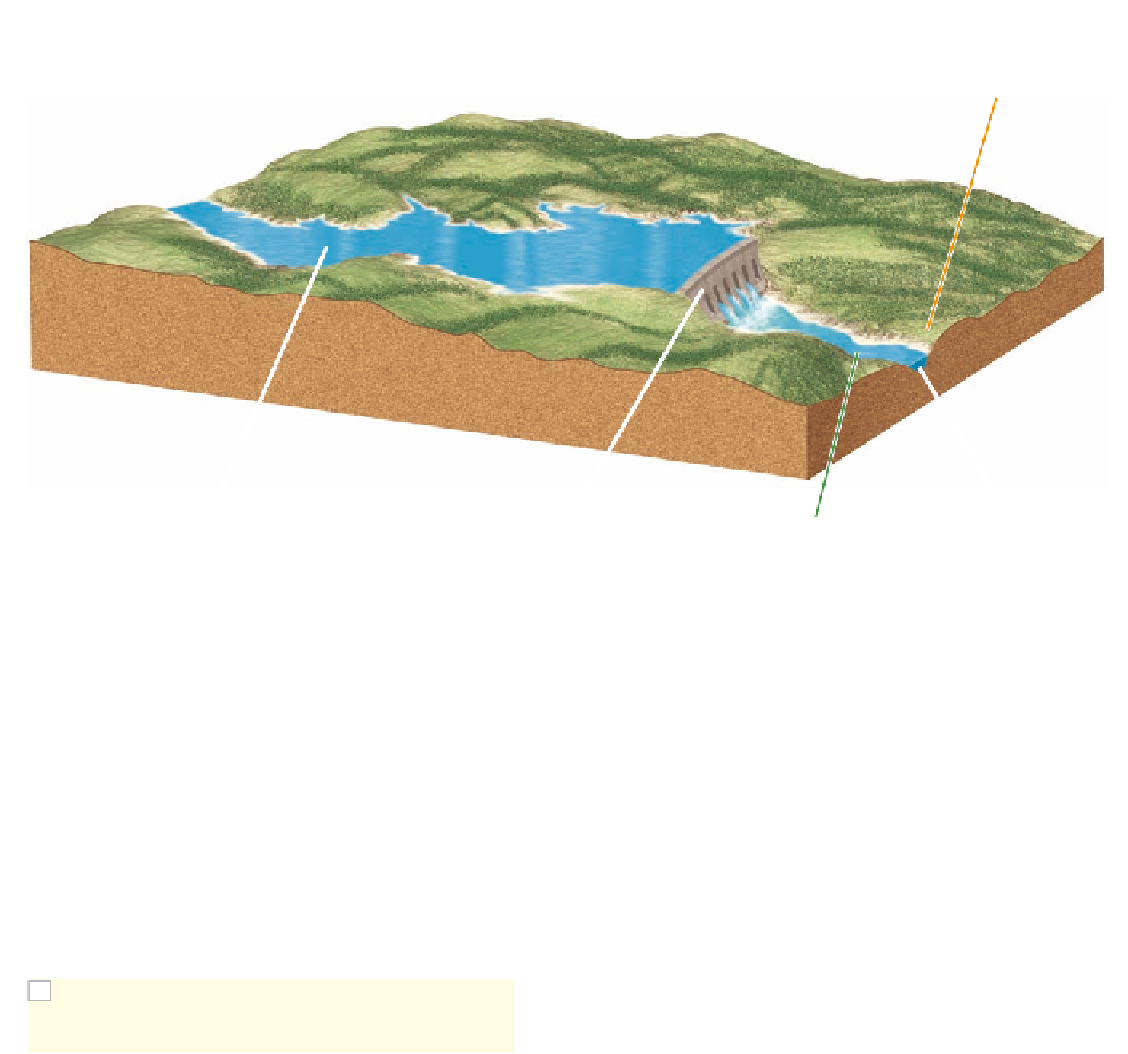Environmental Engineering Reference
In-Depth Information
Large losses
of water through
evaporation
Flooded land destroys
forests or cropland and
displaces people
Migration and
spawning of some
fish are disrupted
Downstream cropland and
estuaries are deprived of
nutrient-rich silt
Reservoir is useful
for recreation
and fishing
Can produce
cheap electricity
(hydropower)
Downstream
flooding is
reduced
Provides water for
year-round irrigation
of cropland
Figure 11-8
Trade-offs:
advantages (green) and disadvantages (orange) of large dams and reservoirs. The
world's 45,000 large dams (higher than 15 meters or 50 feet) capture and store 14% of the world's runoff, pro-
vide water for 45% of irrigated cropland, and supply more than half the electricity used by 65 countries. The
United States has more than 70,000 large and small dams, capable of capturing and storing half of the coun-
try's entire river flow.
Critical thinking: pick the single advantage and disadvantage that you think are the most
important.
Since 1960, the Colorado River in the United States
has rarely made it to the Gulf of California because of a
combination of multiple dams, large-scale water with-
drawal, and prolonged drought. Its dwindling water
supply threatens the survival of species that spawn in
the river, destroys estuaries that serve as breeding
grounds for numerous aquatic species, and increases
saltwater contamination of aquifers near the coast.
Natural Capital
Ecological Services of Rivers
• Deliver nutrients to sea to help sustain
coastal fisheries
• Deposit silt that maintains deltas
x
H
OW
W
OULD
Y
OU
V
OTE
?
Do the advantages of large
dams outweigh their disadvantages? Cast your vote online at
http://biology.brookscole.com/miller11.
• Purify water
• Renew and renourish wetlands
•P ovide habitats for wildlife
Trade-Offs: Advantages and Disadvantages of
Water Transfers—the California Experience
The massive transfer of water from water-rich
northern California to water-poor southern California
has brought many benefits, but remains controversial.
Tunnels, aqueducts, and underground pipes can trans-
fer stream runoff collected by dams and reservoirs
from water-rich areas to water-poor areas. They also
create environmental problems. Indeed, most of the
world's dam projects and large-scale water transfers il-
lustrate an important ecological principle:
You cannot
do just one thing.
A number of unintended environmen-
tal consequences almost always occur.
Figure 11-9
Natural capital:
important ecological services
provided by rivers. Currently, the services are assigned little or
no monetary value when the costs and benefits of dam and
reservoir projects are assessed. According to environmental
economists, attaching even crudely estimated monetary values
to these ecosystem services would help sustain them.
One of the world's largest water transfer projects
is the
California Water Project
(Figure 11-10, p. 244). It
uses a maze of giant dams, pumps, and aqueducts (ce-
ment-lined artificial rivers) to transport water from
water-rich northern California to southern California's









